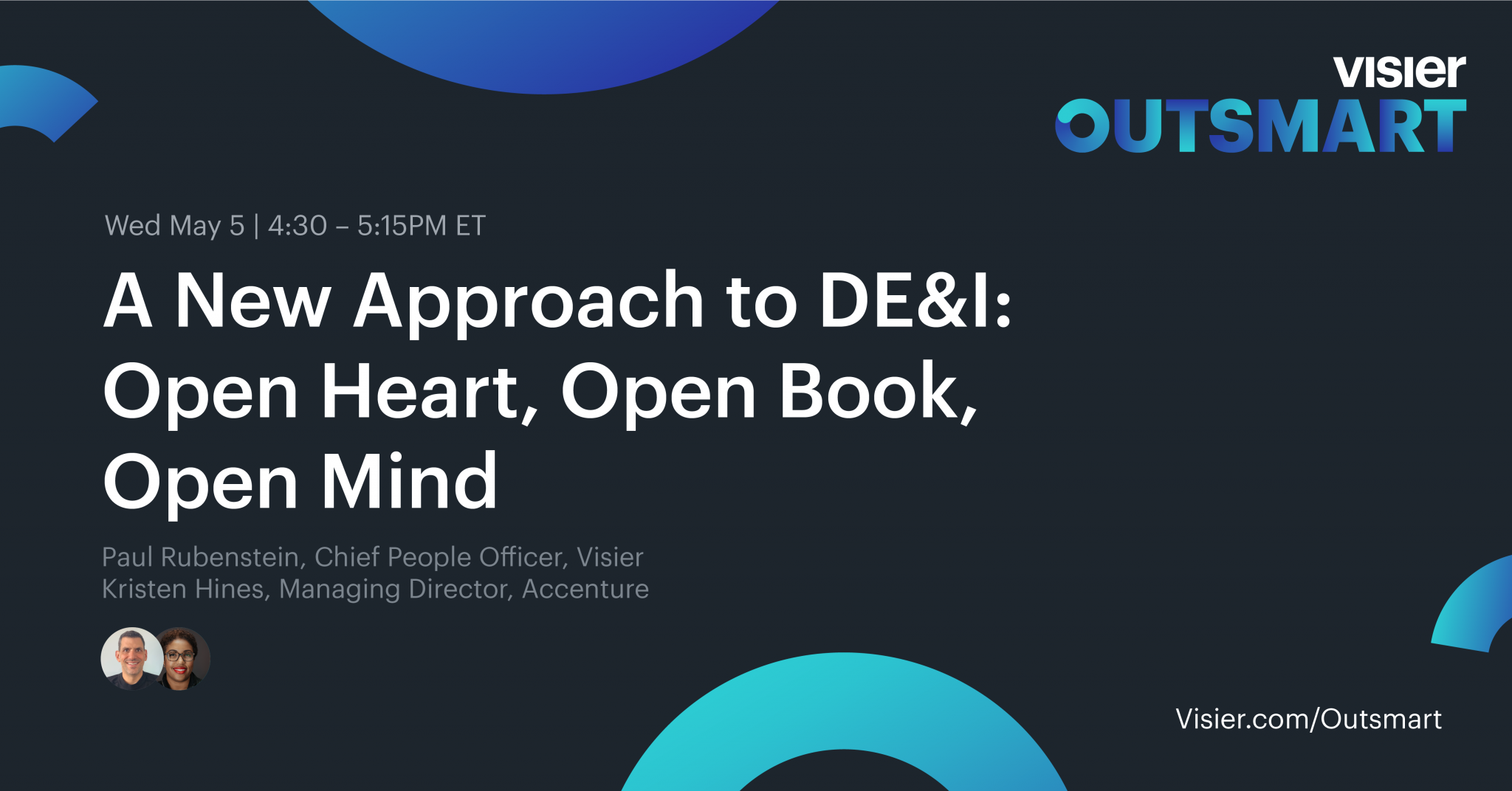Successful AI Products: 4 Pillars to Look For
AI products are everywhere — but how can companies tell if they’ll actually provide value? These 4 principles are a good guide.

Outsmart, the leading people analytics and workforce planning conference, takes place online on May 5-6, 2021. It’s free to register so save your spot today! In honor of the global digital summit, we’re excited to bring you this article featuring one of this year’s speakers. Come back everyday leading up to the conference for more great insights. Enjoy!
Artificial Intelligence has generated immense public interest and hype. Advanced machine learning and analytics, both for HR and other business functions, are a way to make quick, efficient decisions that are grounded in data and keep companies on track to their goals.
But with all this public interest has come a tidal wave of companies hurrying to invest in AI, often without a solid understanding of how to use AI product to create true business value. For companies looking to buy AI solutions and improve how they do business, choosing the right one can be incredibly confusing and challenging. It’s not always easy to identify a great AI solution, especially with so many the hastily developed products flooding the market.
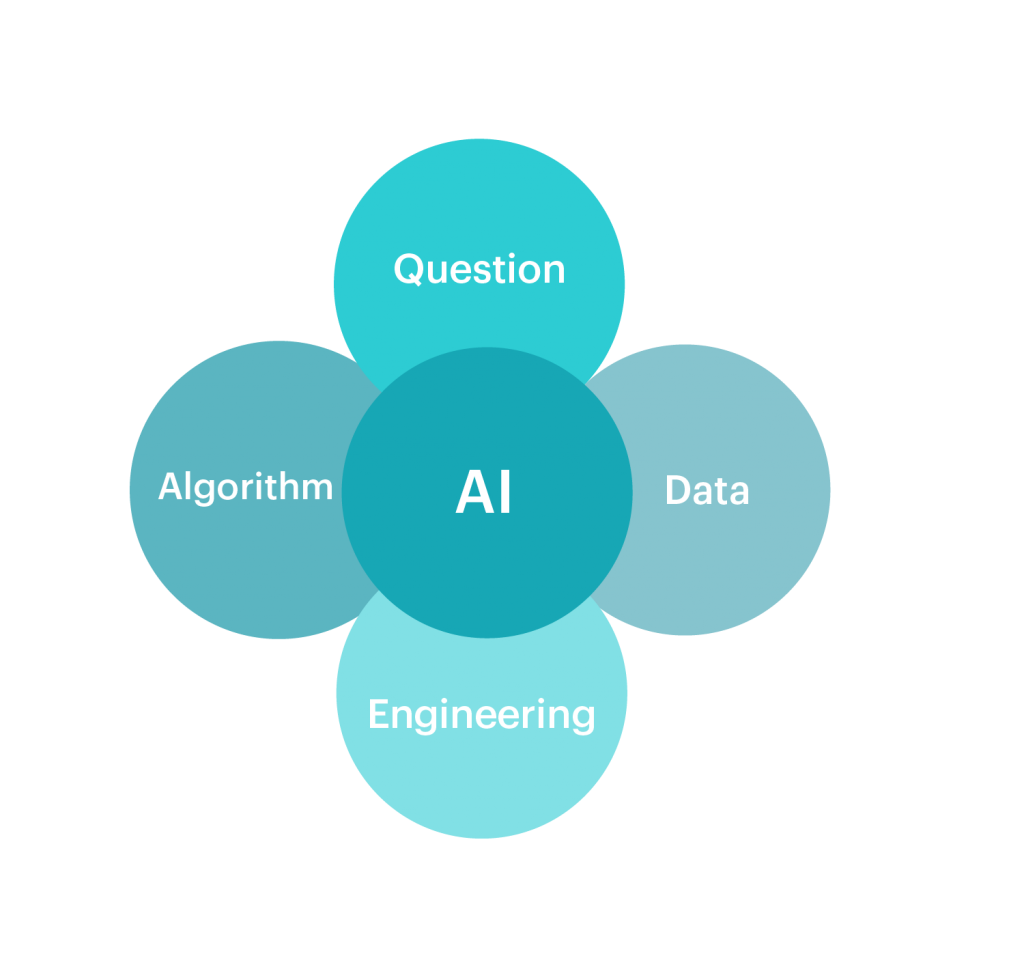
AI isn’t magic, and it’s not an automatic, effortless answer to every business problem. To be successful and offer a return on your investment, an AI product must use the right algorithms, trained on a large quantity of good quality data, to answer a high value question. Then, it must be engineered into a scalable, user-friendly product.
Here, we’ll break down these four components and explain why each of them is equally important to solving business problems with AI in a useful, valuable, and efficient way.
Companies looking to adopt a new AI solution can use these four pillars as a guide to ensure they’re choosing a valuable and well-designed product.
Pillar 1: The Question
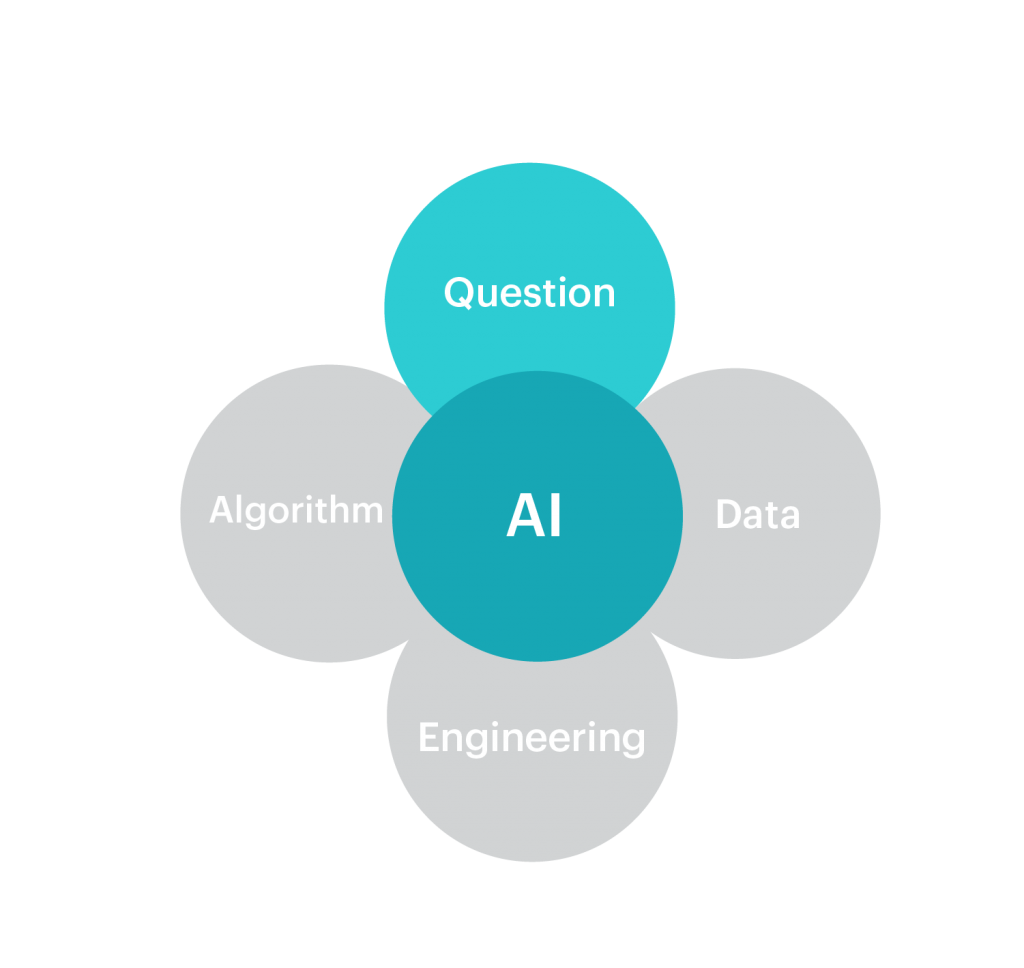
The most important feature of a successful AI product is a question or problem for it to solve. This may sound obvious, but because of the tremendous buzz around AI, organizations often rush into AI initiatives, bringing in data scientists and starting work without a clear enough goal. In these situations, scientists are left stranded, unable to even measure the success of their work, let alone deliver a return on the company’s investment.
The right questions are both high value, and realistically answered by AI. For that reason, they’re often best generated as a collaboration between business leadership and their data science team. Senior leaders and executives have the deepest understanding of their business’ goals, while scientists have a better understanding of what AI can actually accomplish.

Within the realm of HR, an example of a great question would be: “How can we improve our rate of employee retention?” This is a high-value question because of the cost of hiring and training new employees: Retaining even 5% more workers could save a larger organization millions of dollars. Data scientists might narrow this question into a more specific, answerable format, such as, “How can we predict when high-value employees are at risk of leaving our organization?”
It takes domain-specific knowledge to generate the right questions. For example, because Visier is delivered with HR-domain specific knowledge as part of the solution, it’s designed to answer high value questions like the example above. While generic AI-driven analytics tools calculate a rate from a set of data, it takes understanding of that data’s significance to single out rates of retention and resignation as higher value.
Pillar 2: The Algorithm
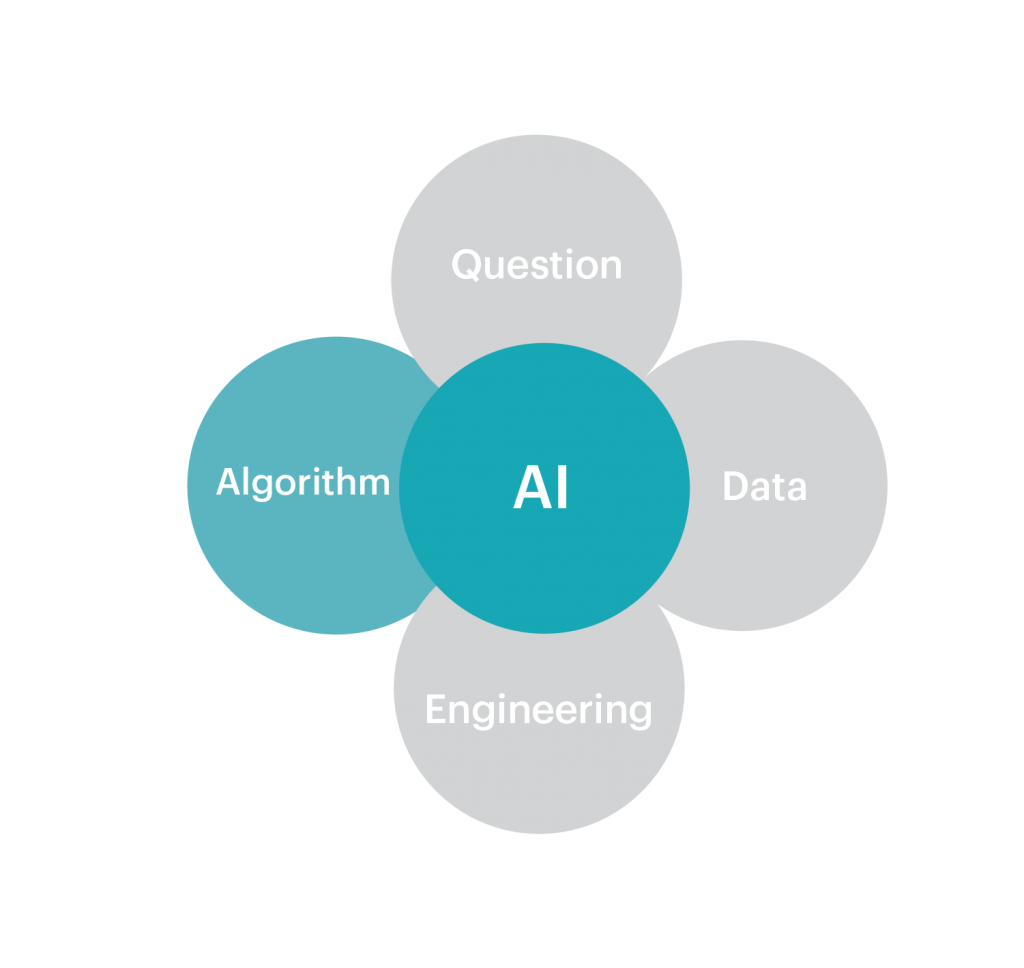
Public discourse around AI tends to centre around the algorithm, and companies looking to launch an AI product tend to focus most of their energy here, too. Because the algorithm represents how AI extracts a solution to the company’s problem from data, it’s easy to see it as the ‘secret ingredient’ that determines the success or failure of the product.
In reality, the right algorithm tends to be the easiest part of launching a new AI product. Companies get excited about investing in a groundbreaking new algorithm–but doing so can be prohibitively expensive, and in many cases, isn’t even the best route to answering their question. Open-source algorithms, which are constantly used and improved upon by scientists and academics all over the world, are popular for a reason. Not only are they perfectly sufficient for most companies’ needs, but they have the advantage of being iterated upon by thousands of people, whereas an algorithm developed specifically for your product will continue incurring cost as it needs to be continually refined and perfected.
Barring high stakes, life-or-death scenarios like self-driving cars, the best development process for most AI products involves trying out and experimenting with open source algorithms to find the right option. Finding the right algorithm simply means hiring great data scientists, then trusting their knowledge and expertise as they either create an original algorithm, or select from and optimize the wide variety of open source options.
This approach is also much more cost-effective. Visier, which makes use of open source algorithms, is a powerful people analytics solution that any size business can benefit from, yet you don’t have to be an analyst to use it.
Pillar 3: Data

Clean, high quality data is just as important as the algorithm used to analyze it. Often, collecting and accessing data is the most challenging part of creating an AI product—much more complicated than creating an algorithm because many parts of the process are not in the scientists’ direct control.
Commonly, companies bring in data scientists only to find that they either have inadequate data to answer their question, or the data they do have is littered with inconsistencies and isn’t high quality enough to be usable. Both scenarios present a problem—scientists have to spend time and energy cleaning up the data, or even worse, come up with a strategy to collect the data they need. These are both complex processes that can take months to years, require the involvement of other departments, and are often held back by privacy and security constraints.
Data is a key reason why Visier’s people analytics solutions are so powerful. Visier has access to a unique, massive, internally consistent dataset of 10+ million employee records across more than 5,000 organizations. The information encoded into this dataset is what is powering the next generation of people analytics AI.
Visier People uses the right algorithms to answer high value, domain-specific HR questions, but it’s only because of the quality of this data that it’s able to use them to generate predictions and insights with such a high degree of accuracy. For most organizations looking to leverage the power of AI, it would be unrealistic to create a dataset of this size and quality from scratch.
Pillar 4: Engineering
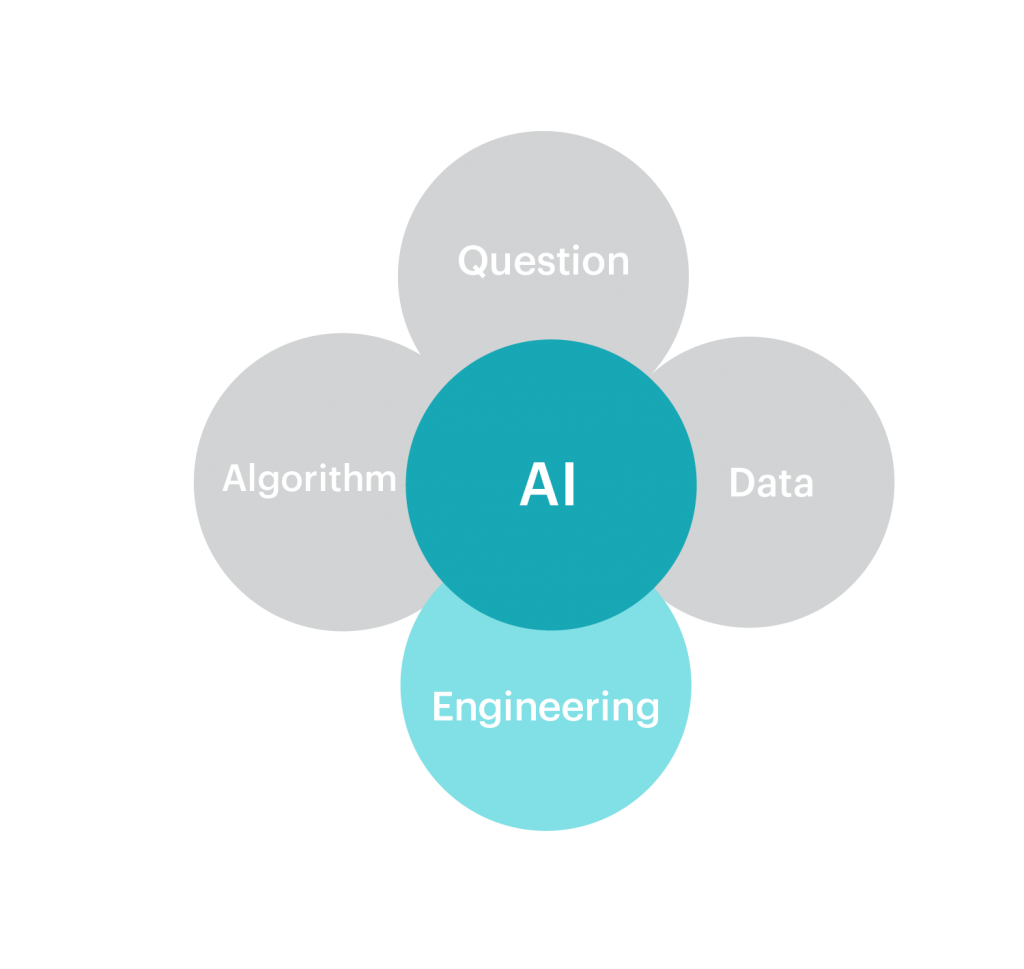
The first three pillars show how AI answers a business question. But it’s only through data and software engineering that AI solutions become scalable, repeatable products. Data scientists excel at using machine learning and data to find the answers to challenging questions, but for those answers and processes to provide real value, they must be easily accessible to everyone in an organization who needs them, with minimal extra cost and effort.
Without great data and software engineering, the process of creating an AI product is only half complete. Too many organizations think their job is done after their data scientists find answers, but then realize their work is trapped in data silos and can’t be replicated by anyone else, especially if they don’t have specialized, technical knowledge.
In contrast, Visier’s AI-generated insights are presented within an intuitive, user-friendly content distribution system. The system was engineered to bring information to the employees who need it safely and securely, without necessitating extra work from the data scientists and AI experts. A well-engineered AI product lets employees access the power of AI to answer their questions quickly and accurately, such as generating predictions about an employee’s risk of exit or resignation.

Seek out AI that adds value
It might be helpful to look at AI as something that requires input from all levels of your organization, rather than being confined to one team, department, or project. Without the guidance of your leadership, you won’t be able to generate a good question for scientists to answer. Nor will you be able to get good data without the cooperation of other departments, or the consent of your employees. And if you don’t have the engineering and development power to build their algorithms into a scalable, repeatable product, all your scientists’ hard work will go to waste.
It takes careful planning to integrate artificial intelligence into a useful, accessible product that will benefit your organization. Bringing in talented scientists to create ingenious new algorithms is exciting, but their expertise is only part of the equation. AI does have the power to move your company closer to its business goals—but it takes good data, smart engineering, and a willingness to find the right questions.
Hear more from Anton at Outsmart on Wednesday, May 5 at 3:30-4:15pm EST in the panel: Better Decisions through Pragmatic AI: A People First Approach. Register for the free digital conference today!
